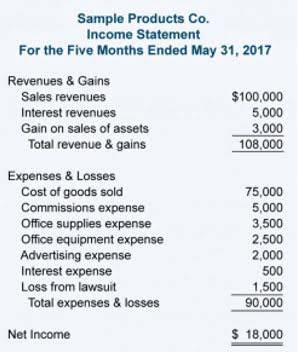Liability: Definition, Types, Example, and Assets vs Liabilities

For example, a company can hedge against interest rate risk by entering into an agreement. By taking these steps, companies can effectively manage their long-term liabilities, making it easier to reach their financial goals and improve their balance sheet. These loans typically have a large principal amount, and will accumulate interest that will need to be paid over the life of the loan. The operating cycle of a company is the amount of time it takes a company to buy inventory, sell it, and then receive the cash from selling the goods. Long-term liabilities are also referred to as non-current liabilities or long-term debt. The act of provisioning is related to the setting aside of an expense or loss or any bad debt in future by the company.
- Companies or businesses need long term debt in order to be used for purchasing capital assets or for investing in any new business project.
- Current liabilities are used by analysts, accountants, and investors to gauge how well a company can meet its short-term financial obligations.
- Commercial paper is also a short-term debt instrument issued by a company.
- With smaller companies, other line items like accounts payable (AP) and various future liabilities like payroll, taxes will be higher current debt obligations.
- Each source of long-term funds has advantages and disadvantages, which should be thoroughly evaluated.
- The business borrows money and agrees to repay it over a set period of time.
Lawsuits and the threat of lawsuits are the most common contingent liabilities, but unused gift cards, product warranties, and recalls also fit into this category. Loans are agreements between a borrower and lender in which the borrower agrees to repay the loan over a period of time, usually with interest. Long-term liability can help finance a company’s long-term investment. Hedging is a way to protect against potential losses by taking offsetting positions in different markets.
How Current Liabilities Work
Debentures provide a fixed coupon rate and have a predetermined redemption date. In some countries, “debenture” is used interchangeably with “bonds.” Furthermore, certain convertible debentures can be converted into equity shares after a specific period. Non-convertible debentures, in contrast, cannot be converted into equity shares and generally carry a higher interest rate. Like bonds, debentures receive a credit rating based on risk level. Accruing tax liabilities in accounting involves recognizing and recording taxes that a company owes but has not yet paid.
They did this because the cost of the premium plus the 5% interest on the face value is mathematically the same as receiving the face value but paying 4% interest. Considering the name, it’s quite obvious that any liability examples of long term liabilities that is not near-term falls under non-current liabilities, expected to be paid in 12 months or more. Referring again to the AT&T example, there are more items than your garden variety company that may list one or two items.
Examples of Long Term Liabilities
Each source of long-term funds has advantages and disadvantages, which should be thoroughly evaluated. When a company or organization takes on a new liability, it needs to be entered as a liability. Some typical transactions for accounting for Long-term Liabilities are listed below.
- Non-current liabilities, on the other hand, don’t have to be paid off immediately.
- AP typically carries the largest balances, as they encompass the day-to-day operations.
- The company receives its initial funding which is also known as seed funding from the shareholders.
- But as time passes, the Premium account is amortized until it is zero.
- A long-term liability is an obligation by a business or organization to repay funds borrowed.
- Keep in mind that long-term liabilities aren’t included with tax liabilities in order to provide more accurate information about a company’s debt ratios.
If the numbers don’t add up, your business can be seen as a bad bet. Sometimes, you get a deferred tax liability because accounting rules do not always run alongside tax laws. So, you can have pre-tax earnings on your income statement that are bigger than the taxable income that shows on your tax return. This happens when you use accrual accounting because tax computation is done on the cash basis method of accounting. This example demonstrates the least complicated method of a bond issuance and retirement at maturity.
Permalink Comments Off on Liability: Definition, Types, Example, and Assets vs Liabilities